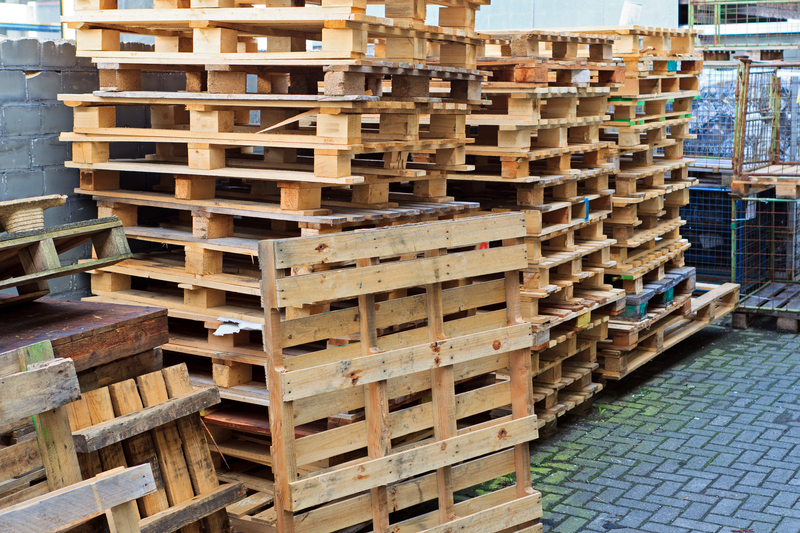The Science and Art of Turning Plastic into New Products
Plastics have transformed the way we live, delivering convenience, durability, and versatility. However, as the environmental impact of these materials becomes increasingly apparent, the process of turning plastic into new products has evolved into both a scientific endeavor and an artistic pursuit. In this article, we'll delve into the innovative methods, technologies, and creative approaches that transform discarded plastic into fresh, usable items, addressing both the science and the art behind this journey.

Understanding the Plastics Lifecycle
To appreciate the significance of recycling plastic into new products, it's crucial to first understand the different types of plastics and their lifecycle. Plastics can be found everywhere -- in packaging, household goods, electronics, automotive parts, textiles, and even medical devices. The journey of plastic products generally follows these stages:
- Extraction and processing of raw materials (mainly petrochemicals or bio-based materials)
- Manufacturing into desired products
- Consumer usage
- Disposal, reuse, or recycling
Unfortunately, a significant portion of wasted plastics ends up in landfills or pollutes natural environments. According to recent global studies, only about 9% of all plastic ever produced has been recycled. This scenario underscores the urgent need for effective ways of converting waste plastic into new products.
The Importance of Plastic Recycling
Plastic recycling isn't just about mitigating environmental harm -- it's a resource-efficient strategy that conserves energy, reduces greenhouse gas emissions, and drives the development of a circular economy. By refining scientific and artistic approaches, we can transform what was once considered trash into valuable material for future use.
The Science of Converting Plastic Waste into New Products
1. Collection and Sorting: The First Step
The scientific journey of recycling plastics into new products begins with effective collection and sorting. Plastics vary significantly in chemical composition and physical properties. Thus, meticulous sorting is necessary to avoid contamination and ensure high-quality end products. This often involves:
- Manual sorting by workers
- Automated processes using optical sensors, infrared spectroscopy, and air jets
- Density separation and flotation techniques
Efficient sorting is the backbone of plastic regeneration, preventing the mixing of incompatible polymers, which can compromise the quality of recycled products.
2. Cleaning and Preparation
Once sorted, plastics undergo thorough cleaning to remove impurities such as labels, food residues, and adhesives. Specialized equipment, including washing lines, granulators, and shredders, reduce the plastic to uniform flakes or pellets. This pre-processing stage is vital for producing clean, high-grade raw material suitable for reprocessing into new plastic items.
3. Methods of Recycling Plastic
There are several scientific methods used to transform plastic waste into new products. Each method is chosen based on the type of plastic, end-use requirements, and local infrastructure. The primary techniques include:
- Mechanical Recycling: Involves melting and remoldeding cleaned plastic into granules or pellets, which are then used to manufacture new items such as bottles, containers, or textiles.
- Chemical Recycling: Also known as feedstock recycling, this process breaks down plastic polymers into their original monomers or other chemical components. These can then be used to produce virgin-quality plastic.
- Energy Recovery: Some plastics that are difficult to recycle mechanically may be incinerated in specialized facilities to generate heat or electricity.
- Biological Approaches: Emerging technologies utilize enzymes or microorganisms to degrade certain plastics into harmless substances or useful raw materials.
Mechanical and chemical recycling form the core of the industrial plastic-to-product transformation process. Each approach has its own merits and challenges in terms of scalability, cost, and environmental impact.
The Art of Creating New Products from Old Plastics
Innovative Design and Artistic Applications
While the science involves precise, engineered processes, the art of turning plastic waste into new products lies in design and creativity. Designers, artists, and entrepreneurs are continually discovering novel ways to repurpose recycled plastics, giving rise to stunning, functional, and sustainable products.
- Fashion and Textiles: Recycled plastic is spun into fibers for use in clothing, shoes, and accessories, often merged with other sustainable materials.
- Furniture and Home Decor: Artistic chandeliers, sleek chairs, and vibrant wall panels are crafted from recovered plastic components.
- Building Materials: Award-winning architects use plastics to create eco-friendly bricks, tiles, and insulation solutions.
- Art Installations: Artists transform plastics into sculptures and public artworks that provoke thought about environmental conservation.
Many of these innovations not only divert plastic waste from landfills but also inspire communities and industries to rethink the possibilities of recycled materials.
Case Study: Ocean Plastics
One of the most compelling examples of the art and science of making new products from plastic is the upcycling of ocean plastics. Several global brands and nonprofits are fishing plastic debris from oceans and turning it into products like:
- Sneakers made from ocean-recovered plastic fibers
- Sunglasses with frames composed entirely of recycled ocean waste
- Surfboards and sports equipment featuring repurposed marine plastics
- Luxury packaging for cosmetics and personal care items
Transforming ocean plastics is a complex challenge due to their degraded condition and variety, but advances in both science and design are making waves in this space.
Technological Breakthroughs in Plastic Upcycling
Advanced Chemical Recycling
Modern plastic upcycling is powered by breakthroughs such as pyrolysis, gasification, and depolymerization. These methods can break down plastic polymers into their building blocks, allowing the creation of high-quality new plastic goods with properties comparable to virgin materials. These technologies are rapidly expanding, enabling broader types of plastics -- even the notoriously hard-to-recycle mixed or multi-layered plastics -- to be transformed.
Enzymatic Decomposition
Scientists are also unlocking the secrets of certain bacteria and enzymes capable of degrading plastics like PET (polyethylene terephthalate). This biological approach potentially allows for endlessly recyclable plastics, dramatically reducing the need for new fossil-derived materials.
3D Printing with Recycled Plastics
Another groundbreaking development in the recycling of plastic into products is the use of 3D printing. Shredded or pelletized recycled plastics are melted and used as feedstock to produce:
- Prototypes and consumer goods
- Medical devices
- Automotive and aerospace components
- Customized art pieces
This technique is not just innovative but also opens doors for localized, small-scale manufacturing -- minimizing transport emissions and promoting circularity.
The Circular Economy and Its Impact
At the core of the movement to turn plastic waste into new products is the concept of the circular economy. Unlike the traditional "take-make-dispose" model, circularity focuses on:
- Prolonging the lifespan of materials through reuse and recycling
- Designing products for easy disassembly and recyclability
- Prioritizing sustainable raw materials and renewable energy
- Encouraging responsible consumption
Brands across the globe now integrate recycled plastics into their supply chains, use eco-design principles, and encourage consumers to participate in recycling efforts. Countries with robust policy frameworks and recycling infrastructure are leading the way, demonstrating the scalability and profitability of turning single-use plastic into reusable products.
Challenges and Opportunities in Plastic Product Regeneration
Limitations in Current Recycling Systems
Despite significant progress, the process of transforming plastic into new products faces several hurdles:
- Contamination: Mixed waste streams and improper sorting can degrade the quality of recycled plastic.
- Downcycling: Many traditional recycling processes result in lower-quality "downcycled" materials that are less versatile.
- Economic Factors: Virgin plastic production can be cheaper than recycling due to fluctuating oil prices and insufficient subsidies.
- Consumer Participation: Lack of awareness and convenient collection systems impede recycling rates.
Opportunities for Innovation and Collaboration
To overcome these challenges, collaboration across industries, governments, and communities is essential. Technological innovations must be paired with effective public policy, education, and behavioral change. Exciting opportunities include:
- Development of universal labeling standards for easier sorting
- Investment in advanced recycling facilities and infrastructure
- Research into new biodegradable or infinitely recyclable plastics
- Creation of incentives for using recycled content in manufacturing
The role of individuals is also critical -- simple actions such as proper sorting, reducing plastic consumption, and supporting circular products contribute to the regeneration of plastic waste into valuable resources.

Future Trends: What's Next for the Art and Science of Repurposing Plastic?
The future of plastic transformation is bright, with groundbreaking innovations emerging at the intersection of science, engineering, and design. Key trends to watch:
- Smart Plastics: New materials engineered to degrade faster or signal when they're ready for recycling.
- Decentralized Recycling: Community-based microfactories turning local plastic waste into custom products onsite.
- AI-Driven Sorting: Machine learning and robotics are enhancing sorting accuracy and efficiency.
- Product-as-a-Service Models: Companies are offering products that can be returned, remanufactured, or endlessly reused.
Furthermore, the growing popularity of "design for disassembly" means that tomorrow's products will be created with their next life in mind, cementing the partnership between the science of recycling and the art of product design.
Conclusion: A New Era for Plastic
The science and art of turning plastic into new products represents a beacon of hope in the quest for a more sustainable future. Through technological breakthroughs, creative vision, and a commitment to environmental stewardship, discarded plastics are no longer destined for landfill or ocean gyres. Instead, they can be reborn -- as clothing, furniture, building materials, art, and everyday essentials.
By embracing innovation and sustainability, we can fully unlock the potential of plastic transformation, leading to cleaner oceans, greener cities, and a healthier planet for generations to come.